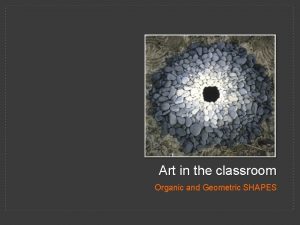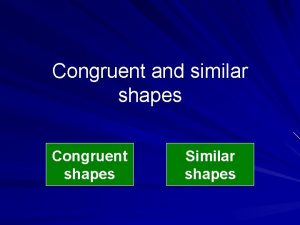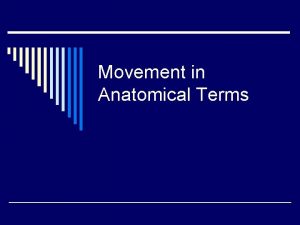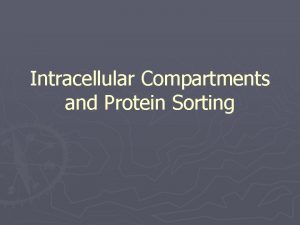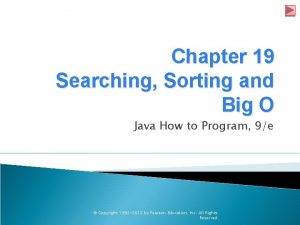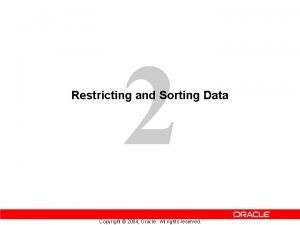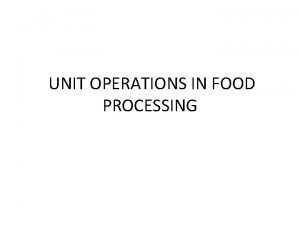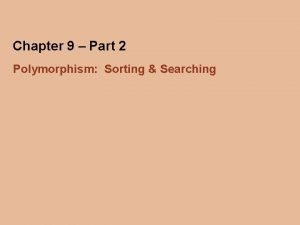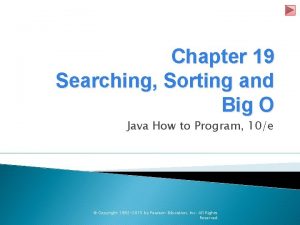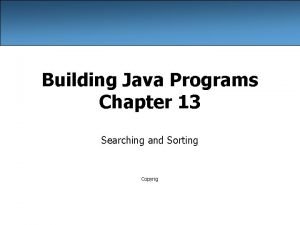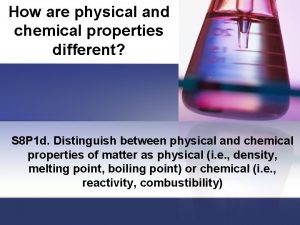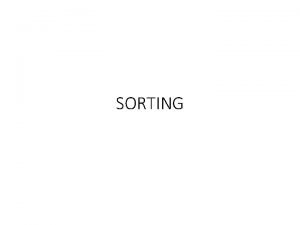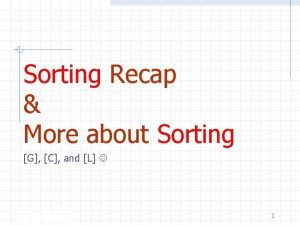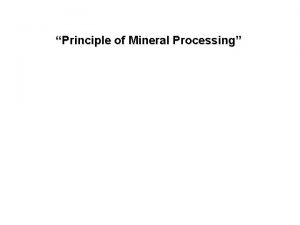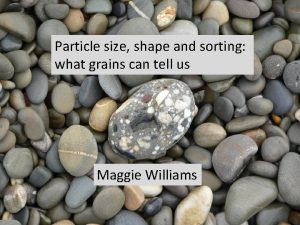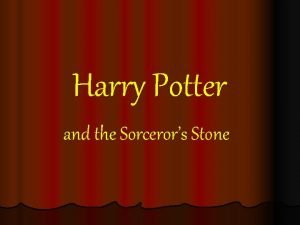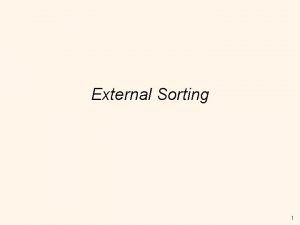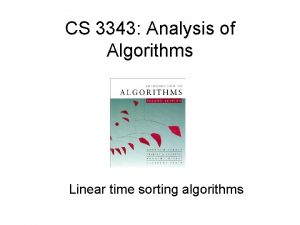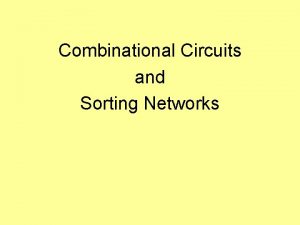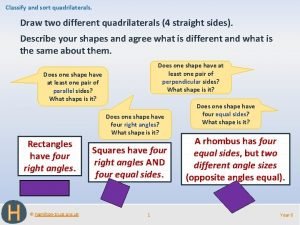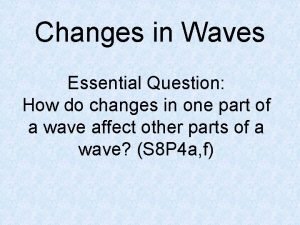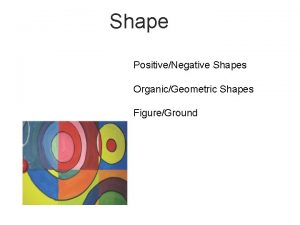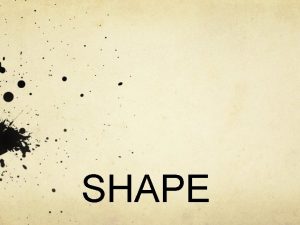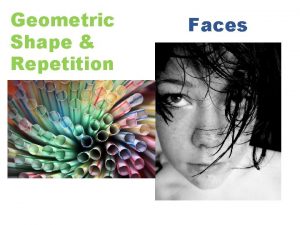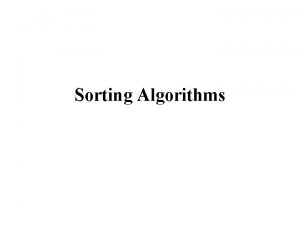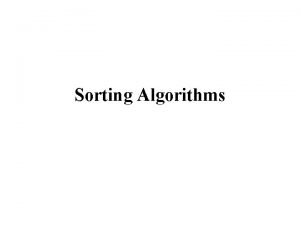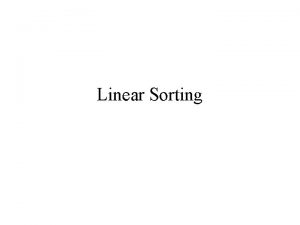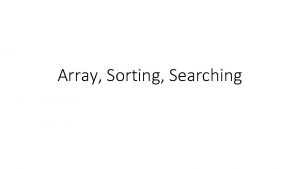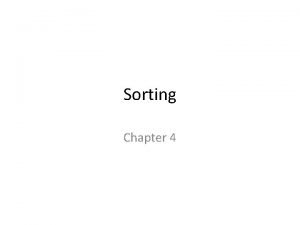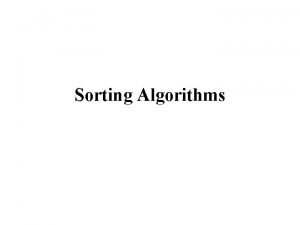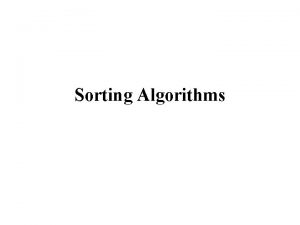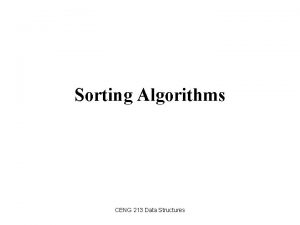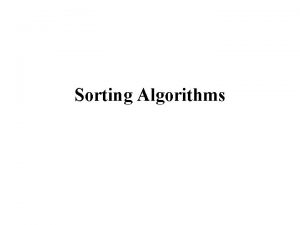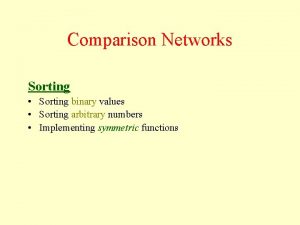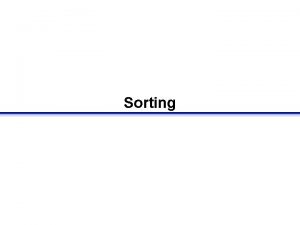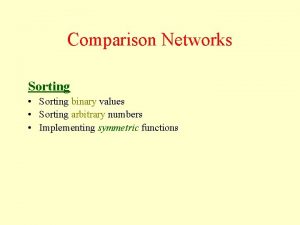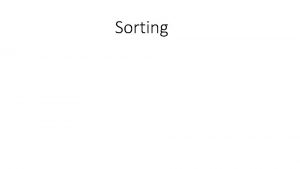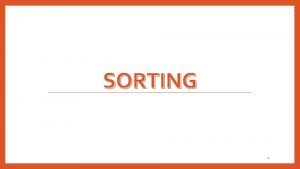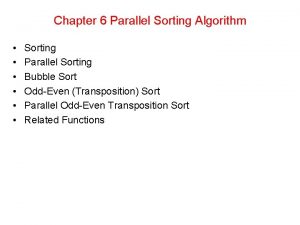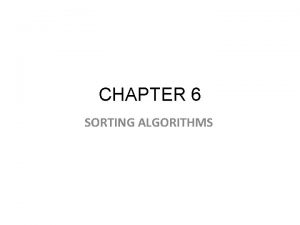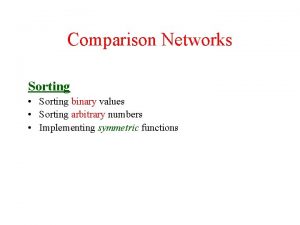Shapes sorting and grouping Position and shape Grouping




































- Slides: 36

Shapes, sorting and grouping Position and shape; Grouping Objectives Day 1 Understand multiplication as repeated addition. Use multiplication sentences to describe a practical problem. Day 2 Use multiplication sentences to describe a practical problem. Begin to make links to division (how many sets of 5 or 10). Day 3 Solve multiplication and division problems. Day 4 Sort numbers into those in the 2 s/5 s count and those not in the 2 s/5 s count. Day 5 Explore nets of 3 -D shapes. © hamilton-trust. org. uk 1 Year R/1

Shapes, sorting and grouping Position and shape; Grouping Objectives Day 1 Understand multiplication as repeated addition. Use multiplication sentences to describe a practical problem. © hamilton-trust. org. uk 2 Year R/1

Day 1: Understand multiplication as repeated addition. Use multiplication sentences to describe a practical problem. We can count in 5 s, Four setskeeping of 5 four times, buttons. track of the. How number buttons are ofmany sets on our fingers: there altogether? 5, 10, 15, 20 © hamilton-trust. org. uk 4 × 5 = 20 Discuss with 4 sets of 5 That’s your partner buttons. how we can work this out. 3 Year R/1

Day 1: Understand multiplication as repeated addition; Use multiplication sentences to describe a practical problem. 3 × 5 = 15 Three of 5 Let’ssets count buttons. together in How 5 s: 5, many buttons are 10, 15 there altogether? © hamilton-trust. org. uk Talk to your That’s 3 sets of 5 partner. How do we buttons. find out? 4 Year R/1

Day 1: Understand multiplication as repeated addition; Use multiplication sentences to describe a practical problem. 6 × 5 = 30 Six sets of 5 Let’s count buttons. How together in 5 s: 5, many buttons are 10, 15, 20, 25, 30 there altogether? © hamilton-trust. org. uk Talk it through That’s 6 sets of 5 with your buttons. partner… 5 Year R/1

Day 1: Understand multiplication as repeated addition; Use multiplication sentences to describe a practical problem. 8 × 2 = 16 Eight sets of 2 Let’s count together bears. How many in 2 s: 2, 4, 6, 8, 10, 12, bears are there 14, 16 altogether? © hamilton-trust. org. uk Discuss with That’s 8 sets of 2 your partner how we canbears. work this out. 6 Year R/1

Day 1: Understand multiplication as repeated addition; Use multiplication sentences to describe a practical problem. 6 × 2 = 12 Six sets of 2 Let’s count together bears. How many in 2 s: 2, 4, are 6, 8, 10, 12 bears there altogether? © hamilton-trust. org. uk How will we That’s 6 sets of 2 find out? bears. 7 Year R/1

Investigation: Adult Sheet © hamilton-trust. org. uk 8 Year R/1

Investigation: Child Sheet © hamilton-trust. org. uk 9 Year R/1

© hamilton-trust. org. uk 10 Year R/1

Shapes, sorting and grouping Position and shape; Grouping Objectives Day 2 Use multiplication sentences to describe a practical problem. Begin to make links to division (how many sets of 5 or 10). © hamilton-trust. org. uk 11 Year R/1

Day 2: Use multiplication sentences to describe a practical problem. Begin to make links to division (how many sets of 5 or 10). Let’s Therecount are 10 the of cubes… cubes! Theretower are 3 towers of 10 cubes. How many cubes altogether? Do we need to count all the cubes one by one? We can count in 10 s: 10, 20, 30 3 × 10 = 30 © hamilton-trust. org. uk 12 Year R/1

Day 2: Use multiplication sentences to describe a practical problem. Begin to make links to division (how many sets of 5 or 10). 5 towers of 10 cubes. How many cubes altogether? Do we need to count all the cubes one by one? We can count in 10 s: 10, 20, 30, 40, 50 5 × 10 = 50 © hamilton-trust. org. uk 13 Year R/1

Day 2: Use multiplication sentences to describe a practical problem. Begin to make links to division (how many sets of 5 or 10). If we had 40 cubes, how many towers of 10 we make? Wecould can count in 10 s: 10, 20, 30, 40 That would be 4 towers. Can you see why? 4 × 10 = 40 © hamilton-trust. org. uk 14 Year R/1

Day 2: Use multiplication sentences to describe a practical problem. Begin to make links to division (how many sets of 5 or 10). If we had 30 cubes how many towers of 5 could we We make? can count in 5 s: 5, 10, 15, 20, 25, 30. That would be 6 towers. Can you see why? 6 × 5 = 30 © hamilton-trust. org. uk 15 Year R/1

© hamilton-trust. org. uk 16 Year R/1

Shapes, sorting and grouping Position and shape; Grouping Objectives Day 3 Solve multiplication and division problems. © hamilton-trust. org. uk 17 Year R/1

Day 3: Solve multiplication and division problems. I have five 2 p coins my purse. We in can count in How much 2 s: 2 p, 4 p, money 6 p, 8 p, do I have 10 p altogether? 5 × 2 p = 10 p © hamilton-trust. org. uk 18 Year R/1

Day 3: Solving multiplication and division problems. IWe have eight 2 pin can count coins in my purse. 2 s: 2 p, 4 p, 6 p, 8 p, How much money 10 p, do I 12 p, have 14 p, 16 p altogether? 8 × 2 p = 16 p © hamilton-trust. org. uk 19 Year R/1

Day 3: Solving multiplication and division problems. I have 8 p in my We can circle purse. If all of the groups of 2 ps 2 p as far coins are how asmany 8 p on the penny coins do I number have? line. 8 p Four groups of 2 in 8 p, so I must have four 2 p coins. How many groups did we circle? © hamilton-trust. org. uk 20 Year R/1

Day 3: Solving multiplication and division problems. I have 6 p in my We can circle purse. If all of the groups 2 p how as far coins areof 2 ps as 6 p on the do penny many coins I number have? line. 6 p Three groups of 2 in 6 p, so I must have three 2 p coins. How many groups did we circle? © hamilton-trust. org. uk 21 Year R/1

Day 3: Solving multiplication and division problems. I have my We 12 p canincircle purse. If all of the groups of 2 p up to coins are 2 ps how 12 p on thedo penny many coins I number have? line. 12 p Six groups of 2 in 12 p, so I must have six 2 p coins. How many groups did we circle? © hamilton-trust. org. uk 22 Year R/1

© hamilton-trust. org. uk 23 Year R/1

Shapes, sorting and grouping Position and shape; Grouping Objectives Day 4 Sort numbers into those in the 2 s/5 s count and those not in the 2 s/5 s count. © hamilton-trust. org. uk 24 Year R/1

Day 4: Sort numbers into those in the 2 s/5 s count and those not in the 2 s/5 s count. Numbers we say in the 2 s count Numbers we don’t say in the 2 s count 5 © hamilton-trust. org. uk Is this a number we say when we count in 2 s from 2? Discuss with your partner. 25 Year R/1

Day 4: Sort numbers into those in the 2 s/5 s count and those not in the 2 s/5 s count. Numbers we say in the 2 s count Numbers we don’t say in the 2 s count These are all the numbers we say in the 2 s count. Is 5 highlighted? 5 Which hoop will it go in? Repeat for 12, 7, 20 and 15. © hamilton-trust. org. uk 26 Year R/1

Day 4: Sort numbers into those in the 2 s/5 s count and those not in the 2 s/5 s count. Numbers we say in the 5 s count Numbers we don’t say in the 5 s count 15 © hamilton-trust. org. uk Is this a number we say when we count in 5 s from 5? Discuss with your partner. 27 Year R/1

Day 4: Sort numbers into those in the 2 s/5 s count and those not in the 2 s/5 s count. Numbers we say in the 5 s count Numbers we don’t say in the 5 s count These are all the numbers we say in the 5 s count. Is 15 highlighted? 15 Which hoop will it go in? Repeat for 12, 7, 20 and 5. © hamilton-trust. org. uk 28 Year R/1

Challenge © hamilton-trust. org. uk 29 Year R/1

Shapes, sorting and grouping Position and shape; Grouping Objectives Day 5 Explore nets of 3 -D shapes. © hamilton-trust. org. uk 30 Year R/1

Day 5: Explore nets of 3 -D shapes. Show the children different 3 -D shapes that you have made. Hold them up one at a time and introduce the name of the shape. Repeat saying this altogether in different voices: quiet, loud, fast and slow. You have 1 minute to talk to your partner about the shape. Think of three things you can tell the rest of the class about the shape. © hamilton-trust. org. uk 31 Year R/1

Day 5: Explore nets of 3 -D shapes. The net is how the shape looks when it is flattened or becomes a 2 -D shape. Let’s open up the shape to reveal its net. What 2 -D shapes can you see in the net? Repeat for other shapes © hamilton-trust. org. uk 32 Year R/1

Day 2: Count on to add 1, 2, 3, 4, and 5 to 5. © hamilton-trust. org. uk 33 Year R/1

Shapes, sorting and grouping Position and shape; Grouping Well Done! You’ve completed this unit. Objectives Day 1 Understand multiplication as repeated addition. Use multiplication sentences to describe a practical problem. Day 2 Use multiplication sentences to describe a practical problem. Begin to make links to division (how many sets of 5 or 10). Day 3 Solve multiplication and division problems. Day 4 Sort numbers into those in the 2 s/5 s count and those not in the 2 s/5 s count. Day 5 Explore nets of 3 -D shapes. © hamilton-trust. org. uk 34 Year R/1

Y 1 Problem solving and reasoning questions Maia has eight 2 p coins, Teddy has two 10 p coins, and Jon has three 5 p coins. Who has the most money? Who has the least money? There are eight towers with 5 cubes in each tower? How many cubes altogether? How many in total if there are 10 cubes in each tower? Tom has 30 p in his purse. He has six coins all the same. What coin does he have? Anna has 24 p in her purse. She has 12 coins all the same. What coins does she have? Write three numbers which are in the 2 s count. Write three numbers which are in the 5 s count. Write three numbers which are in the 10 s count. Name three shapes which you could use, dipping one side in paint, to print a square. © hamilton-trust. org. uk 35 Year R/1

Year 1 Problem solving and reasoning questions: Answers Maia has eight 2 p coins, Teddy has two 10 p coins, and Jon has three 5 p coins. Who has the most money? Who has the least money? Maia has 16 p, Teddy 20 p and Jon 15 p. So, Teddy has the most and Jon the least. Some may think that Maia has the most since she has the most coins (and Teddy the least), confirm this by counting in 2 s, 5 s and 10 s with real coins. There are eight towers with 5 cubes in each tower? How many cubes altogether? 40 cubes. How many in total if there are 10 cubes in each tower? 80 cubes. Tom has 30 p in his purse. He has six coins all the same. What coin does he have? He has 5 p coins. Anna has 24 p in her purse. She has 12 coins all the same. What coins does she have? She has 2 p coins. Write three numbers which are in the 2 s count. Any three multiples of 2, e. g. 2, 4, 6. Write three numbers which are in the 5 s count. Any three multiples of 5, e. g. 10, 15, 20 Write three numbers which are in the 10 s count. Any three multiples of 10, 30, 40, 50 Name three shapes which you could use, dipping one side in paint to print a square. Cube, cuboid, square based pyramid. © hamilton-trust. org. uk 36 Year R/1
 Internal vs external sorting
Internal vs external sorting 5th position
5th position Geometric shapes and organic shapes
Geometric shapes and organic shapes Differentiate similar polygons from congruent polygons
Differentiate similar polygons from congruent polygons Similar shapes and proportions lesson 4-1
Similar shapes and proportions lesson 4-1 Shape matching and object recognition using shape contexts
Shape matching and object recognition using shape contexts Shape matching and object recognition using shape contexts
Shape matching and object recognition using shape contexts Position in fundamental
Position in fundamental Drag divergence mach number
Drag divergence mach number Fundamental position vs anatomical position
Fundamental position vs anatomical position How to grade potatoes
How to grade potatoes Intracellular compartments and protein sorting
Intracellular compartments and protein sorting Bubble sort vs selection sort
Bubble sort vs selection sort Searching and sorting arrays in c++
Searching and sorting arrays in c++ Big oh java
Big oh java Restricting and sorting data in oracle
Restricting and sorting data in oracle Sorting and grading in food processing
Sorting and grading in food processing Lesson 1: analyzing a graph
Lesson 1: analyzing a graph Searching and sorting in java
Searching and sorting in java Big o java
Big o java Searching and sorting in java
Searching and sorting in java Physical and chemical properties sorting activity
Physical and chemical properties sorting activity Lego sorting machine instructions
Lego sorting machine instructions Sorting adalah
Sorting adalah What is stable sorting
What is stable sorting Separation examples
Separation examples Sorting sedimentary rocks
Sorting sedimentary rocks Sorting classifier
Sorting classifier Sorting grain size phi
Sorting grain size phi Sediment sorting
Sediment sorting Inplace sorting
Inplace sorting Sorcerors stone
Sorcerors stone External sorting techniques
External sorting techniques Stable sorting algorithm
Stable sorting algorithm Sorting circuit
Sorting circuit Draw two different quadrilaterals
Draw two different quadrilaterals Changes in wave properties sorting activity answer key
Changes in wave properties sorting activity answer key


